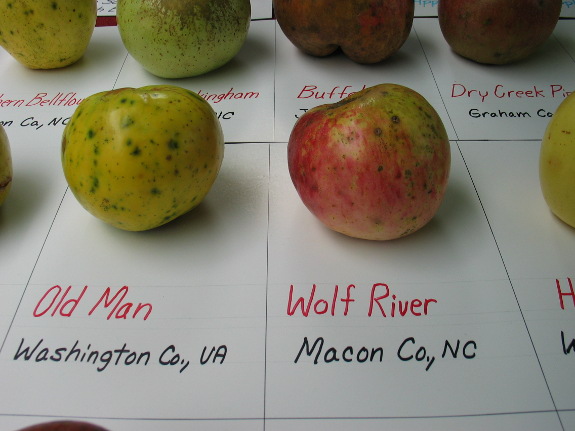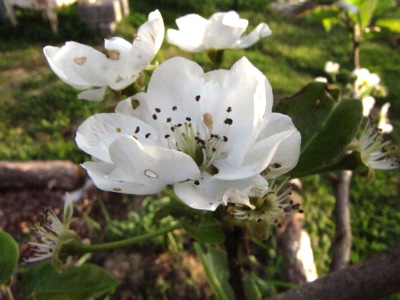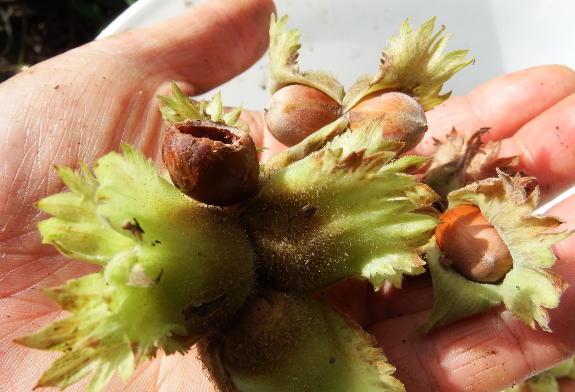
Tips for starting a food forest
 "My
wife and I just bought a piece of land out in central MA (zone 6A), and
I'm planning to put in a whole slew of fruit and nut trees next spring.
It's exciting, but also a daunting exercise trying to figure out what
to put in, how to arrange them, what spacing, etc. Do you have any
advice for a novice? Anything you wish you knew when you were planting
your first trees?"
"My
wife and I just bought a piece of land out in central MA (zone 6A), and
I'm planning to put in a whole slew of fruit and nut trees next spring.
It's exciting, but also a daunting exercise trying to figure out what
to put in, how to arrange them, what spacing, etc. Do you have any
advice for a novice? Anything you wish you knew when you were planting
your first trees?"
Starting a new food
forest is an exciting undertaking, although also fraught with a lot of
difficulties. What I wish I'd known before I planted the first tree is
that our initial site had such high deer pressure that nothing could
survive, then the second site had such high groundwater that winter
water once again killed all of my expensive trees, and finally that our
entire homestead exists in a frost pocket where spring blooms are
inevitably nipped by late frosts. Moral so you don't repeat my mistakes:
spend a year growing annual crops in your future food forest site to
find out which problems will need to be overcome before you throw a lot
of money away with perennials.
 During
that year, you can learn grafting and can read up on forest gardening.
However, be aware that many of the authors of bestselling forest
gardening books are theorizers rather than practitioners with decades of
success under their belts. For example, I learned the hard way that planting comfrey within the root zones of young fruit trees results in nitrogen-starved trees,
despite the fact that many books advocate this type of interplanting.
And even though many texts list dozens of fruiting plants that can
handle heavy shade, scientific experiments suggest that yields are much reduced in these scenarios.
To be honest, I'm working my way out of wishing to create forest
gardening guilds and am focusing more on a diverse planting in which
each productive plant is given lots of mulched elbow room.
During
that year, you can learn grafting and can read up on forest gardening.
However, be aware that many of the authors of bestselling forest
gardening books are theorizers rather than practitioners with decades of
success under their belts. For example, I learned the hard way that planting comfrey within the root zones of young fruit trees results in nitrogen-starved trees,
despite the fact that many books advocate this type of interplanting.
And even though many texts list dozens of fruiting plants that can
handle heavy shade, scientific experiments suggest that yields are much reduced in these scenarios.
To be honest, I'm working my way out of wishing to create forest
gardening guilds and am focusing more on a diverse planting in which
each productive plant is given lots of mulched elbow room.
Since I'm keen on
no-spray organic gardening, I also wish I'd realized that many of the
commonly sold varieties will flounder in these conditions. Hunting down disease-resistant apples, pears, and stone fruits will reduce future headaches dramatically. While you're at it, high-density methods with dwarf trees
is a great way to get a head start on what will inevitably be a bit of a
game of trial and error figuring out which varieties thrive in your
unique conditions and suit your tastebuds. Of course, trees planted in
this manner require more work in the weeding, mulching, and
summer-pruning departments, but you'll cut years off your experiments
and will enjoy fruit much sooner. Once you figure out what grows well
for you, you can use that information to plant larger, less needy trees.
 After almost a decade of experimentation, we're still very much getting our woody perennial legs under us. The only variety that has been an unabashed success has been the hybrid hazel
bush that started producing last year. It survived everything our farm
threw at it...so we planted three more bushes. Luckily, various types of
berries
have filled in the gap, but I'm still waiting for those bushels of
apples I dreamed about when we first moved to the farm. Maybe easily
coverable espaliers or that sunny hillside across the way will overcome
our spring freeze problems....
After almost a decade of experimentation, we're still very much getting our woody perennial legs under us. The only variety that has been an unabashed success has been the hybrid hazel
bush that started producing last year. It survived everything our farm
threw at it...so we planted three more bushes. Luckily, various types of
berries
have filled in the gap, but I'm still waiting for those bushels of
apples I dreamed about when we first moved to the farm. Maybe easily
coverable espaliers or that sunny hillside across the way will overcome
our spring freeze problems....
Want more in-depth information? Browse through our books.
Or explore more posts by date or by subject.
About us: Anna Hess and Mark Hamilton spent over a decade living self-sufficiently in the mountains of Virginia before moving north to start over from scratch in the foothills of Ohio. They've experimented with permaculture, no-till gardening, trailersteading, home-based microbusinesses and much more, writing about their adventures in both blogs and books.
Want to be notified when new comments are posted on this page? Click on the RSS button after you add a comment to subscribe to the comment feed, or simply check the box beside "email replies to me" while writing your comment.

Anna, you are a wealth of evidence-based knowledge! Thank you for all your work, observations, and publications (including this blog).
A tip from our local tree guy about fruit tree siting: he says if your area is prone to late frosts, to plant trees on north slopes or other colder locations - the idea bring to keep the trees from flowering early, so they are still dormant (or have less-developed, more frost-resistant buds) when the cold snap happens. It's ground temp, not air temp, that most influences budding, and north slopes get less sun.
Anna:
Thank you for the thoughtful reply! It sounds like I should consider scaling back my first-year ambitions and focus on learning, not just planting. The deer issue worries me, because they are definitely a problem in our area too. But I know every site has its own set of challenges. Time will tell.
One of my favorites, and expresses some of the same concerns about frosts and pests that we all have...guess not much has changed in apple growing..... http://www.poetryfoundation.org/poem/173529
If you can find some people who are local to you and see what they are growing and what they wish they had done differently or what worked well for them, that will help. Especially with choosing varieties to plant. I planted six dwarf apple trees (on EMLA 26 -- I have limited space, but Bud-9 is not as good here, and EMLA-27 just seemed silly) the first fall after I moved to SW Virginia from NE Pennsylvania after doing tons of research on what varieties to choose and what the threats would be, like did I still need CAR-resistant apple varieties, or did VA not have Cedar Apple Rust (I wish!). Sadly, I think I still might have made a couple mistakes... so now I'm learning grafting and will topwork a couple trees over into different varieties to try to improve my yields. One more thing, I'm also now reading Michael Phillips book THE HOLISTIC ORCHARD right now, and I recommend it. I don't know that all of his zone three recommendations and 200 tree based ideas will work for me (or you) but he is at least practicing what he preaches so it isn't just some barely-researched ehow advice. The gist seems to be healthy soil makes healthy trees and pay attention to helpful fungi. He's very keen on the soil-root-web thing. Wish I had thought more about that aspect way back when I was first starting! So yep, prep your site... maybe a fall/winter cover crop this year.
Hi Anna,
I hope you're having a wonderful Christmas week I just wanted to let you know that I featured one of your posts on my "Best Homesteading Posts of 2015" post at Proverbs 31 Woman: http://www.proverbsthirtyonewoman.blogspot.com/2015/12/best-homesteading-posts-of-2015.html#.VnmHklK_mMI
I just wanted to let you know that I featured one of your posts on my "Best Homesteading Posts of 2015" post at Proverbs 31 Woman: http://www.proverbsthirtyonewoman.blogspot.com/2015/12/best-homesteading-posts-of-2015.html#.VnmHklK_mMI